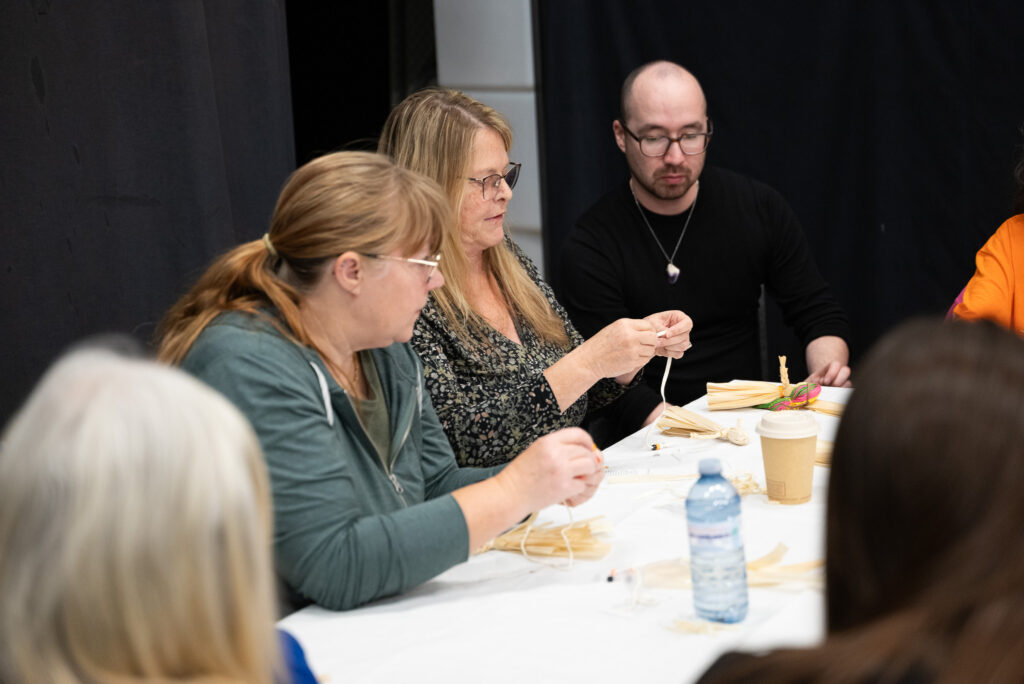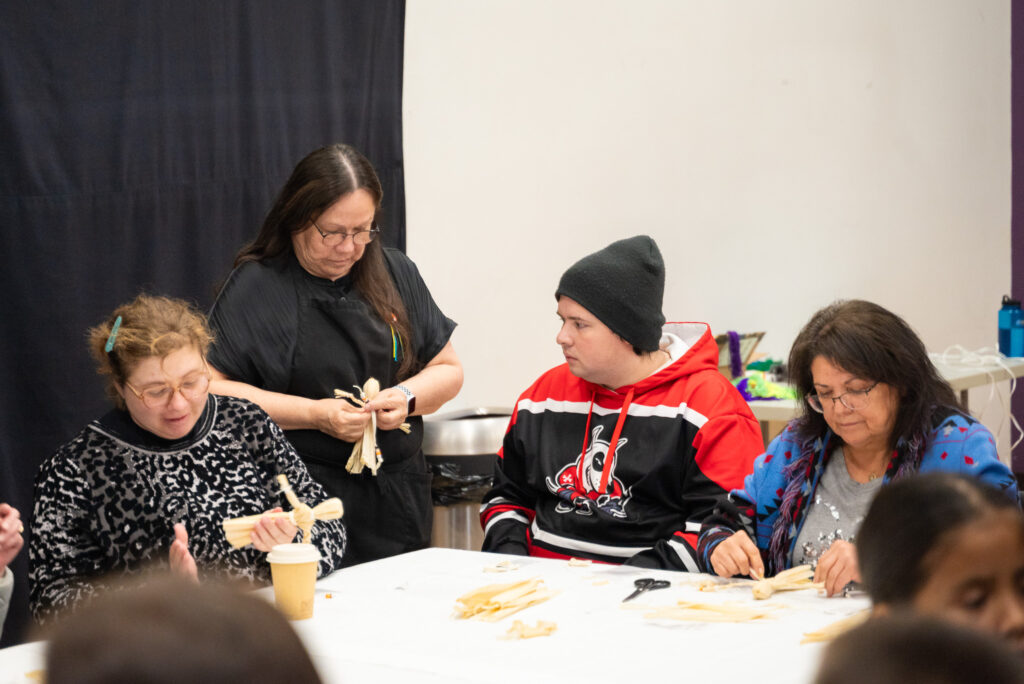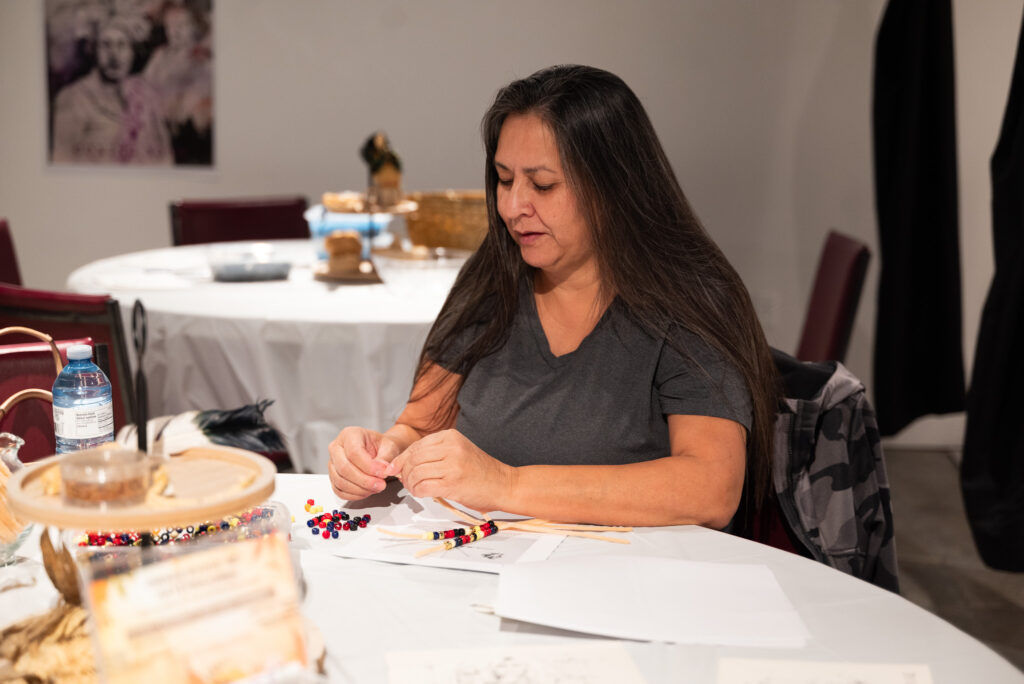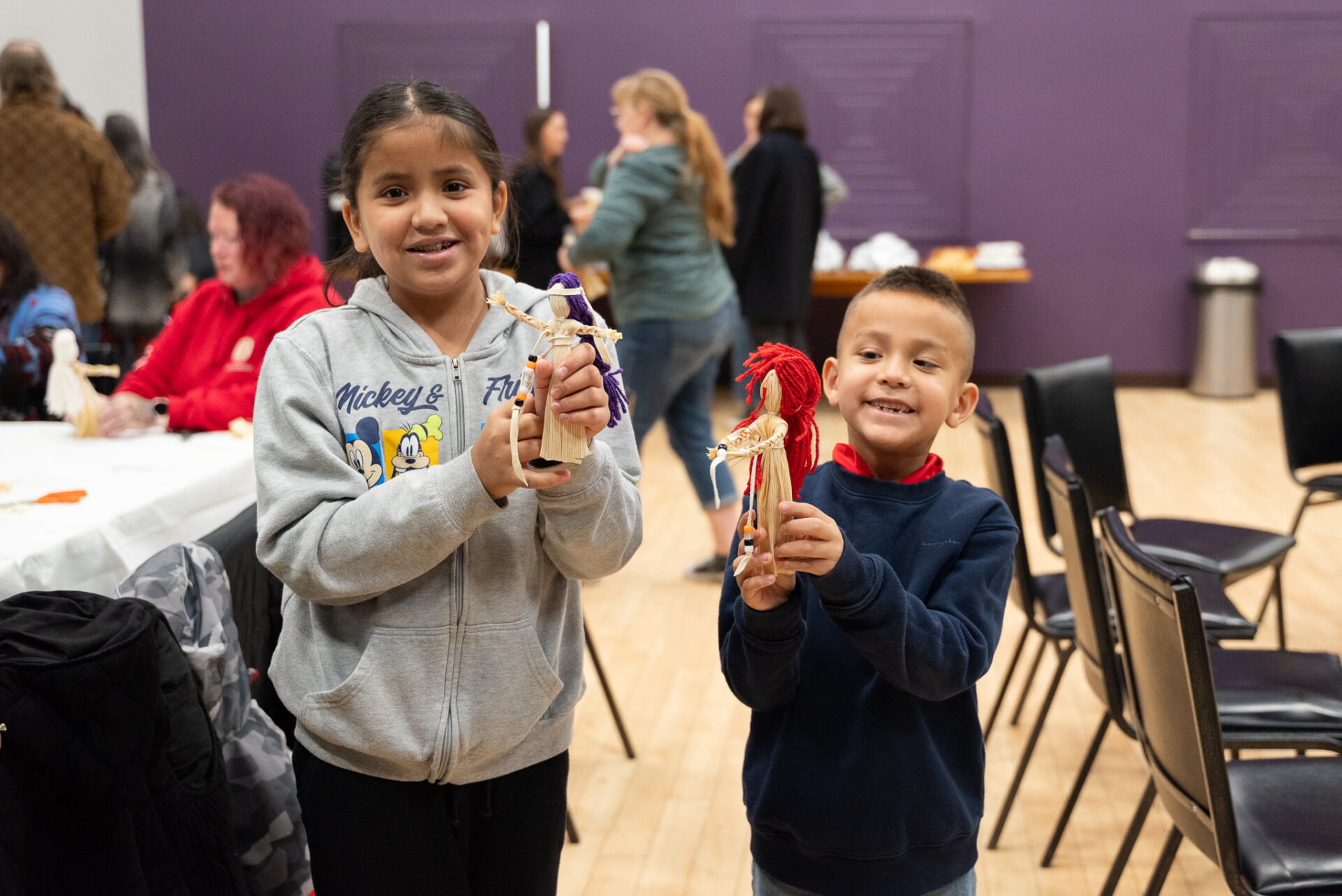Community members attended Woodland Cultural Centre’s Dwadę’nyota’ ne:’ Gayętwa:gwęh “We Celebrate the Harvested Food” Festival, a two-day event which ran on Saturday, November 16 and Sunday, November 17, 2024.
Olga Kolotylo, Arts Administrative Assistant for Woodland Cultural Centre, said the event was held as a way to celebrate the harvest season, acknowledge the importance of food sovereignty and honour the strength and the resiliency of Indigenous communities.
She added that although harvest season happens around usually September and October, there’s no reason to not celebrate it, or the meaning behind it, any other time of the year.
“Harvest season is all about cultivating seeds and recognizing what you’ve grown, right? It’s about caring for nature, and for me, I think it’s about understanding how Indigenous communities are so resilient and active in doing that, so why not celebrate any time you can?” she said.

Following the opening ceremony on Saturday afternoon, many visitors took the opportunity to explore the gallery or participate in various drop-in activities such as making their own beaded pipe cleaner corn craft, or colouring various images from the Group of Six colouring book.
For the guests who signed up ahead of time, Elizabeth Doxtater, a Mohawk artist from Six Nations of the Grand River and knowledge keeper, led the participants through an hour-long Corn Husk Doll workshop.
Throughout the workshop, Doxtater spoke about the story and the meaning behind the Corn Husk Doll and its link back to the time of Creation.

She spoke about how the dolls are intentionally faceless to remind people to not be consumed by their external appearances and to remain humble. Starting from top to bottom, Doxtater noted that it was important to keep a good mind while creating the doll through each step.
“The husk is a medicine, it’s something that protects the people, and it’s used in many different ways,” she said. “What I use the husk for, is to project the stories of our people and part of that is making this doll in the same process as our ancestors. …We can’t have any bad thoughts in our minds when we’re doing this, so if you’re having a lot of difficulty, try to take a few breaths to clear your mind and then come back to it. Our actions and thoughts have to be connected.”
Tonia Whitlow, one of about 20 people in the workshop, said she was happy she got to participate and learn more about the history behind the dolls.
“I almost didn’t get a spot in the workshop but I’m glad I did because I’ve always wanted to make one,” said Whitlow. “I knew some of the history going into this, but I thought it was interesting to learn more about it and what it represents.”

After the workshop wrapped up, Doxtater then gathered the attendees in a circle for a storytelling session. After telling her four stories, she then gave away a bundle of heritage seeds to each participant.
Following Doxtater, Sara General, an author from Six Nations, hosted a book reading, and as the afternoon continued on Blayze Longboat and Crew performed several dances for those in attendance before wrapping up the day with the closing address.
During Sunday’s ticketed film screening event, the Bawaadam Collective showed three contemporary retellings of Haudenosaunee stories, meant to foster community storytelling practices, told in the Cayuga Language.

The first, Corn Husk Doll, the second, How the Medicine Came to the People, and the third, Hato.
During the screening, residents got to indulge in a lunch of corn soup, three sisters soup, sandwiches and wraps, pies and strawberry juice. Afterwards, the Bawaadam Collective hosted a question and answer panel session for those who wanted to learn more about the films.
Overall, Kolotylo said that she hoped that people who attended either one, or even both of the day, were able to take something away from the event.
“When helping to plan this event, I think I followed my intuition and I really did it with the intention of fostering genuine connections and so now that it’s happening, I hope that’s something people can really take away from this, you know?” said Kolotylo.
Kimberly De Jong’s reporting is funded by the Canadian government through its Local Journalism Initiative.The funding allows her to report rural and agricultural stories from Blandford-Blenheim and Brant County. Reach her at kimberly.dejong@brantbeacon.ca.
